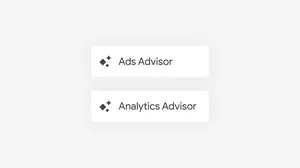The mobile challenge, and how to measure it
Does your mobile website have a lower conversion rate than your desktop version? As some people are spending up to 70% of their time on mobile, imagine how much additional revenue you could gain if the conversion rate levels were the same.
A recent report showed that mobile conversion rates are 47 percent of the levels achieved on desktop. As more and more of your customers are using mobile devices, you need to ensure your mobile conversion rate is keeping up, and maintain your revenue.
One way you can monitor your mobile website performance is by reviewing your Relative Mobile Conversion Rate (Rel mCvR), which is calculated by dividing the mobile conversion rate with the desktop conversion rate.
The high traffic share for mobile, with lower conversion rates, will show your stakeholders that there is a gap the company will need to bridge by improving the mobile site.

Mobile and desktop conversion rates are influenced by two main parameters. The first is traffic influencers—this can be things like channel mix, marketing campaign, seasonality. The second is the performance of the website, for example UX and site speed. Any of these can cause your mobile or desktop conversion rate to go up or down.
The benefit of using Rel mCvR to evaluate your mobile performance is that traffic influencers tend to not impact the metric. Why? Because the same campaigns and seasonalities will reach both mobile and desktop versions of your website, a good marketing campaign will make both the mobile and desktop conversion rate go up but leave Rel mCvR stable. When you evaluate the metric over time, it will show us if we have improved our mobile website.
Things to keep in mind when evaluating Rel mCvR:
Always keep an eye on your desktop conversion rate. If Rel mCvR has an abnormal peak, check if it’s due to the desktop having a technical problem that made the desktop conversion rate decrease.
Track your Rel mCvR weekly. Because the metric is based on your entire website’s performance, driving improvement will take time. Reviewing your data daily can be too volatile, look for the large movements over time instead.
Be mindful of that companies with physical stores may never reach 100 percent in Rel mCvR, as mobile is often used for doing research before or while visiting a store. 70 percent is a good target to start with.

How to improve your mobile site and Rel mCvR
A better user experience on your mobile site leads to increased revenue and better Rel mCvR. To get there, I recommend you start A/B testing on your mobile site to improve your mobile conversion rate. It’s through A/B tests that you become guided by your customers and provide what they need.
Start with these three steps:
Review the process of conversion optimization in the Optimize Resource Hub.
Get inspired by what other companies have done.
Set up your first test–for free–in Google Optimize.
When you’re focused on improving your mobile site with conversion optimization and A/B tests—your Rel mCvR will start to show your progress.





